We compare Toyota Fortuner and Ford Endeavour to find out which is better between the two SUVs in aspects like Prices, Specifications, Features, Dimensions, and Mileage
Back in the years, full-size SUVs weren’t very popular in India. Apart from the fact that the market’s emphasis was more on smaller cars, even the enthusiasts and aficionados would give more preference to a sedan. But over the course of time, this trend changed. With the launch of the Pajero in the early 2000’s, people’s perceptions regarding SUVs had completely transformed. They went from impractical off-road focussed vehicles to luxurious possessions that personified power and strength. While the Pajero is still present in the market, two other cars have almost completely stolen its mojo namely, the Toyota Fortuner and the Ford Endeavour. Today, we will compare the latest generations of both these butch SUVs to find out which one is better. So let’s find out who triumphs in our Fortuner vs Endeavour face-off.
Fortuner vs Endeavour: Dimensions
| Measurements | Toyota Fortuner | Ford Endeavour |
| Length | 4795 mm | 4892 mm |
| Width | 1855 mm | 1860 mm |
| Height | 1835 mm | 1837 mm |
| Wheelbase | 2745 mm | 2850 mm |
| Tyre Size | 265/65 R17, 265/60 R18 | 265/60 R18 |
| Ground Clearance | 225 mm | 225 mm |
| Boot Space | 296 Litres | 450 Litres |
| Weight | 1855 to 2140 Kg | 2238-2394 Kg |
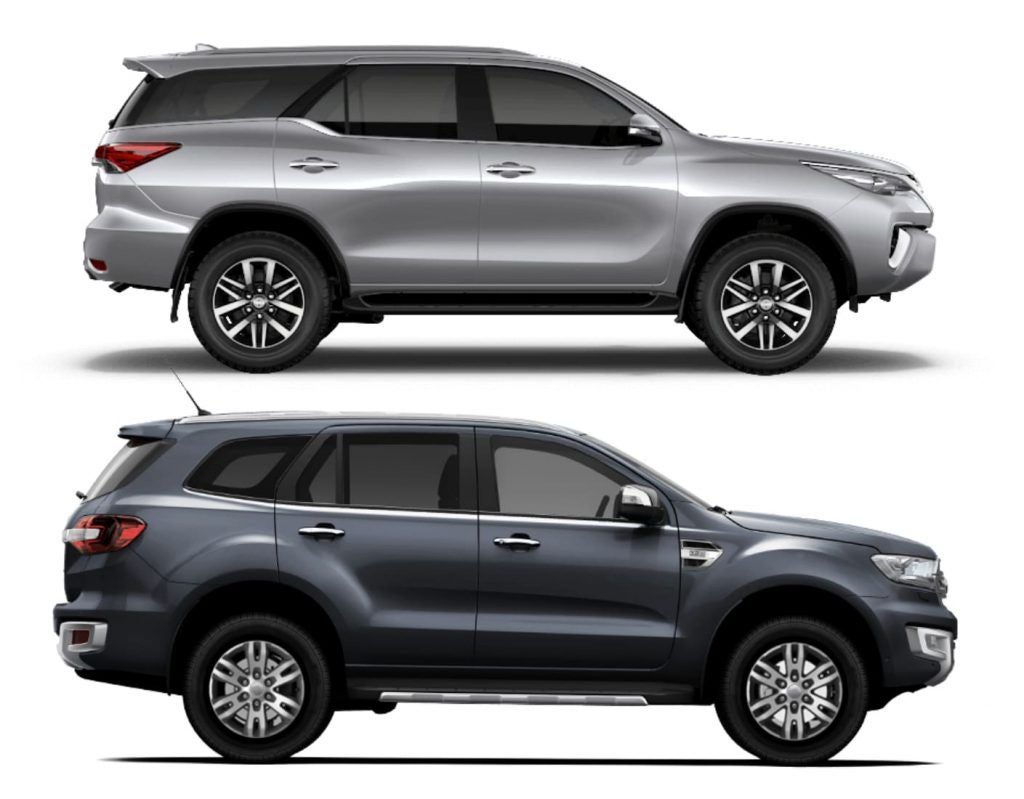
In person, both these SUVs look huge, and buff in proportions and their size is indeed intimidating. However, comparing the dimensions, the Ford Endeavour emerges as the clear victor. It has a significant advantage in length and just marginally wins over the Fortuner in terms of width and height. Even in terms of wheelbase, the Endeavour wins and effectively stands more stable on the road compared to the Fortuner. Both cars surprisingly have the same ground clearance and at 225mm are up for some generous off-roading. Boot space is another aspect where the Endeavour has a strong upper hand. The only area where the Endeavour loses out is in terms of weight where it is a good 200 kilos heavier than the Fortuner.
Fortuner vs Endeavour: Comparison of Specifications and Mileage
Engine Specifications (Petrol):
| Parameters | Toyota Fortuner | Ford Endeavour |
| Capacity | 2694cc | - |
| Power | 166bhp@5200RPM | - |
| Torque | 245Nm@400RPM | - |
| Transmission | 5-Speed Manual/6-Speed Auto | - |
| Fuel Tank | 80 Litres | - |
| Mileage | 10 Km/l | - |
Engine Specifications (Diesel):
| Parameters | Toyota Fortuner | Ford Endeavour |
| Capacity | 2755cc | 2198cc (3198cc) |
| Power | 177bhp@3400PM | 160bhp@3200RPM (200bhp@3000RPM) |
| Torque | 420Nm@1400-2600RPM (MT)/ 450 Nm@1600-2400 RPM (AT) | 385Nm@1600-2500RPM (470Nm@1750-2500RPM) |
| Transmission | 6-Speed Auto | 6-Speed Auto |
| Fuel Tank | 80 Litres | 80 litres |
| Mileage | 14 kmpl | 12 kmpl (11 kmpl) |
Both SUVs are drastically different in terms of performance and pack in entirely different engine variants. The Fortuner is the only full-size SUV in its segment that comes with a petrol option as well. The Endeavour continues on the existing tradition of having diesel only powerplants. It makes up for the lack of options by offering two diesel variants, a smaller 2.2-litre and a bigger 3.2 litre.
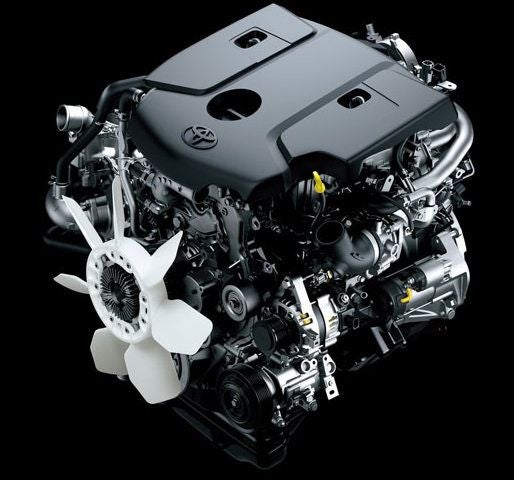
Fortuner vs Endeavour: Fortuner Engine Performance
It is quite strange to associate a petrol engine with an SUV this big, but surprisingly enough the Fortuner’s petrol mill is quite potent. It is the same 2.7-litre unit that is used on their Innova Crysta MUV. The petrol engine is exceptionally refined as you would expect and has enough power to make sure you’re not revving the nuts out of the engine at all times. It is very tractable for both highway and city use. The only downside is the extremely poor mileage. In comparison, the 2.8 diesel feels much more conventional. Highway riding is bliss with the waterfall of torque available. The turbo lag is also very minimal and well-managed and doesn’t hamper your city driving experience at all. The engine is very versatile and will see you through city-drives or highway-drives with similar ease.
Fortuner vs Endeavour: Endeavour Engine Performance
Unlike the Fortuner, the Endeavour sticks to the usual segment diesel only powerplants but offers two displacement variants. The 2.2 litre is the more affordable, fuel-efficient and user-friendly option. Despite its small displacement, it packs a lot of punch and is almost close to the Fortuner’s 2.8 diesel. It feels neither underpowered nor explosive. It’s just sufficient for getting the job done. In contrast, the 3.2 is the jacked-up cousin of the 2.2. The 3.2 puts out torque with a generous “Holy Shit” factor. It gets a variable geometry turbocharger, a high-pressure direct injection fuel system, and a variable flow oil pump. All these gizmos give it some genuinely exciting performance with almost zero turbo-lag, just like the 2.2 variant.
Fortuner vs Endeavour: Gearbox Options
Both cars come with a manual as well as automatic options and different permutations for 4x4. The Fortuner gets automatic and manual options on petrol as well as diesel cars. But the petrol version only gets 4x2 options while the diesel gets 4x2 and 4x4 options for both automatic and manual variants. On the other hand, the Endeavour just gets an automatic gearbox for all variants. The 2.2 variant comes in 2-wheel and 4-wheel drive while the 3.2 is limited only to 4-wheel drive. The Fortuner’s manual comes with an intuitive iMT technology (diesel only) which automatically does the rev matching when you are shifting gears. This works for both up and downshifts. The automatic variant gets a lovely set of paddle shifters which feel lovely to operate. The Endeavour gets the good ol’ torque converter type automatic. Similar to the Fortuner, the Endeavour’s gearbox gets a driver-adaptive software which understands the real-time driving pattern of the driver and shifts accordingly. The Endeavour’s gearbox is permissive on manual mode. Even if you are aggressively shifting down, it doesn’t jump up a gear automatically when the revs increase. It allows the downshift to happen also if the RPM gets very close to the redline. It will enable you to redline even while upshifting which is the exact necessity when you are in the mood for shenanigans.
Fortuner vs Endeavour: Comparison of Features and Looks
Toyota Fortuner Equipment and Appearance:
The Toyota Fortuner is the newer car of the two and recently got a thorough revamp in 2017. It boasts of the following features:
- Redesigned Extended Chrome Front Grille
- Bi-Beam LED Projector Headlamps
- Intelligent Smart Key
- LED Tail Lights With Aero Fins
- 12 Spoke Polished Rims
- Optitron Instrument Cluster with Soft Touch Panel
- LED Cabin Lights
- Engine Start/Stop Button
- Leather and Metal Accents over Centre Console
- 7-inch Touchscreen Infotainment System With GPS Navigation
- Rear View Camera with Sensors
- Electronically Controlled Power Back Door
- One Touch Foldable Seats
- Cooled Glove Box
- Console Integrated Cup Holders with Retractable Cover
- Smart Suspension System with Pitch and Bounce Control Stabilizers
- iMT Intelligent Manual Transmission Module
- Paddle Shifters
- Eco and Power Driving Modes
- Safety Net comprising of 7 Airbags, Active Traction Control, Downhill Assist, Hill Assist Control, Electronic 4x4 Switcher, Vehicle Stability Control, ABS, EBD and Brake Assist
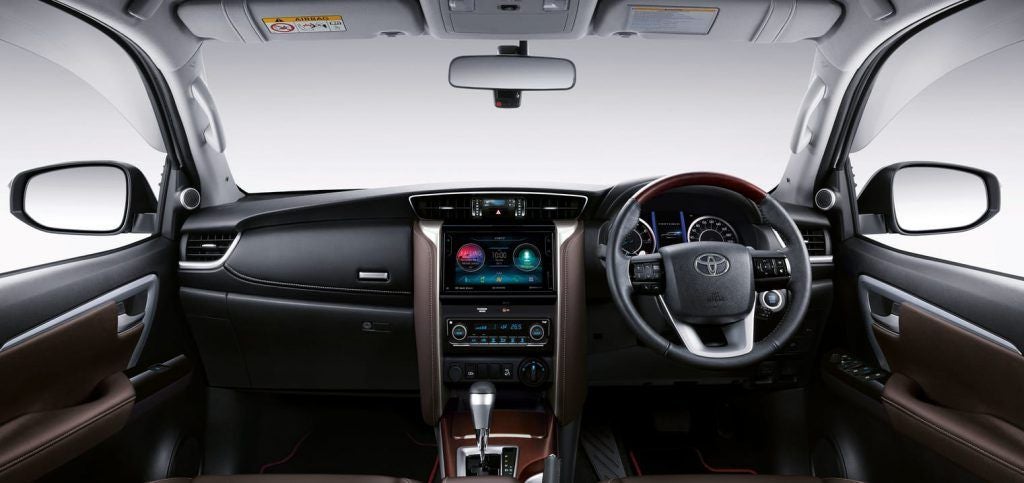
As expansive as the Fortuner’s equipment list is, the car looks gorgeous in its latest rendition. While its size is imposing, the front face of the Fortuner looks quite sophisticated and futuristic as well courtesy the headlamp cluster. The Fortuner looks good in every perspective you view it from. The side profile has a very prominent recessed area running across the lower side of the doors which give it a bit of character. Coming to the rear, the SUV continues to maintain its flare. This one of the few cars where the tail section looks very well integrated with the front and almost looks like an extension of the same. All in all, full marks for the way the Fortuner looks. Once you step into the car, it feels very premium. The interiors are doused in leather and wooden panels giving it a very upmarket and luxurious feel.
Ford Endeavour Equipment and Appearance:
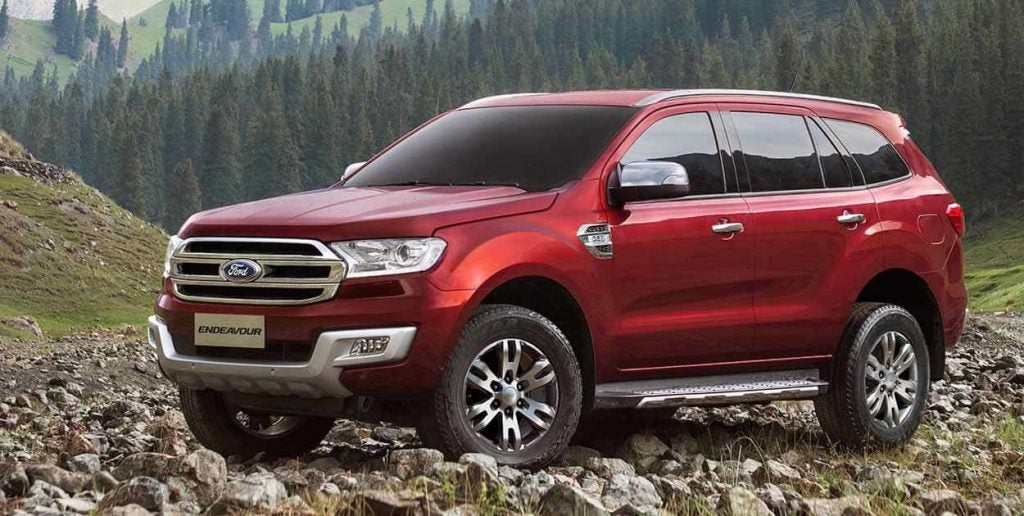
The Ford Endeavour also received a thorough revamp, but it got the same a year prior to the Toyota Fortuner. It consists of the following equipment:
- Ford F-series Inspired Front Grille
- Wrap-Around LED Projector Headlamps with DRL’s
- Wrap Around LED Tail Lamps
- 6-Spoke Titanium Finish Rims
- Smart Instrument Cluster with Multiple Display Modes
- 22-Button Steering Integrated Controls
- 8-inch Touchscreen Infotainment System With Sync 3 Voice Recognition Module
- Semi-Auto Parallel Park Assist
- Rear View Camera with Parking Sensors
- Panoramic Sunroof
- One-Touch Electronic Foldable Seats and Tailgate
- Active Noise Cancellation
- Safety Net Comprising of 7 Airbags, Electronic Stability Control, Electronic Power Assist Steering with Pull-Drift Compensation, Active Terrain Management System, Hill Descent Control With Launch Assist, Electric Rear Differential Lock, ABS, EBD, and a Volumetric Smart Burglar Alarm
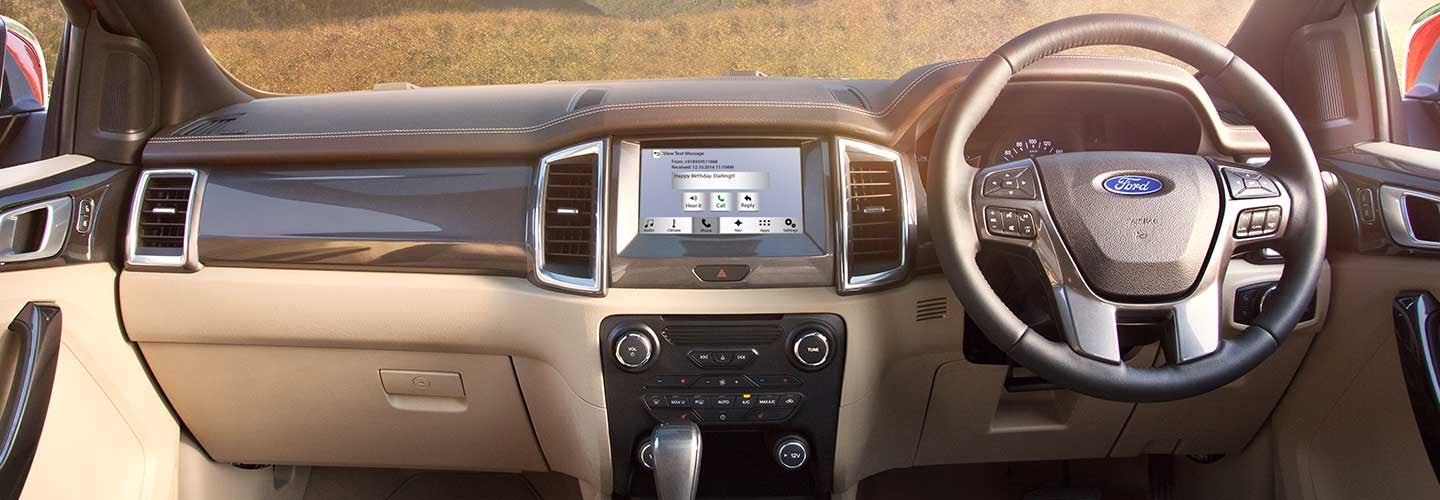
Unlike the Fortuner which tries to fit both sides of the spectrum, the Endeavour has a clear-cut design approach. It looks imposing and aggressive like a jacked up bodybuilder. View it from any angle, and the Endeavour oozes the same intimidating overview. Only the rear section is a little subtle compared to the rest of the vehicle. The flared wheel arches and the high-profile fat tyres make it look imposingly muscular which are sure to make the SUV’s presence felt on the roads. The interior is surprisingly plush for a butch SUV like this. There are tonnes of creature comforts present inside which make it a quite welcoming experience. A special mention to that beautiful panoramic sunroof as well.
Fortuner vs Endeavour: Comparison of Prices
Pricing for the Toyota Fortuner starts at Rs.27.27 lakhs for the 4x2 Petrol Manual and goes all the way up to Rs.32.97 lakhs for the fully loaded 4x4 Diesel Automatic. Pricing for the Ford Endeavour starts at Rs.26.32 lakhs for the 2.2-litre 4x2 Diesel and goes up to Rs.32.81 lakhs for the decked out 3.2-litre 4x4 Diesel.
Fortuner vs Endeavour: Conclusion
- Dimensions: The Endeavour is the clear winner here. It wins in all aspects except the kerb weight, where the Fortuner is lighter.
- Performance: This is a very mixed bag. Both cars cover a different variety of options. The Fortuner offers a Petrol option while the Endeavour gets two diesel variants instead. Even regarding the gearbox and technology, both SUVs have their intricate shares of perks. Both SUVs are as capable in the city as they are on the highway. This round is down to personal preferences and therefore ends in a stalemate.
- Mileage and Range: Surprisingly both cars have the same fuel tank capacity. The Fortuner’s diesel is marginally more economical and hence has more range than the Endeavour’s. The Fortuner’s petrol, however, is quite abysmal in terms of both. Another round draw.
- Features and Equipment: The Toyota Fortuner attempts to draw a middle line by balancing out corresponding bits of luxury and ruggedness. The Endeavour, on the other hand, is entirely focussed on the latter but is still surprisingly plush from the inside. The Endeavour misses out on a lot of basic creature comforts like the push button starter or a passive keyless entry which the Fortuner has. However, it makes up for it in the form of other useful bits like the parallel park assist and the electric suspension control. Another round draw.
- Price: The Endeavour is more affordable than the Fortuner across all its trims.
- Final Verdict: This battle was insanely close despite the competitors being entirely different. It comes as a great surprise that three main rounds ended in a stalemate. However, the Endeavour edges ahead in terms of price and wins by a decent margin in terms of dimensions. Hence, the winner of our Fortuner vs Endeavour battle is the mighty Ford Endeavour.





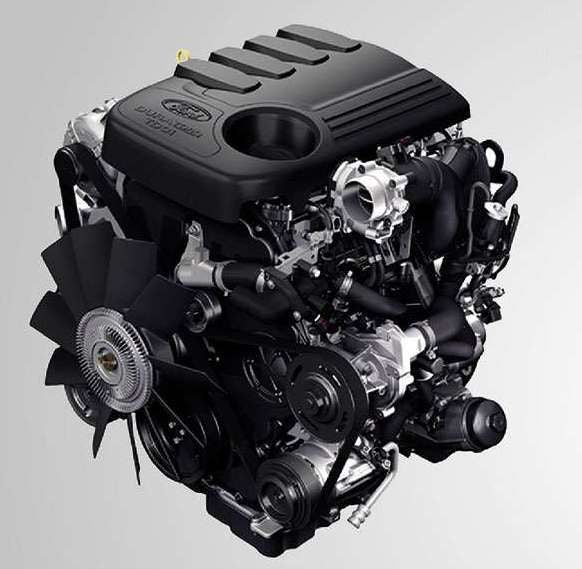
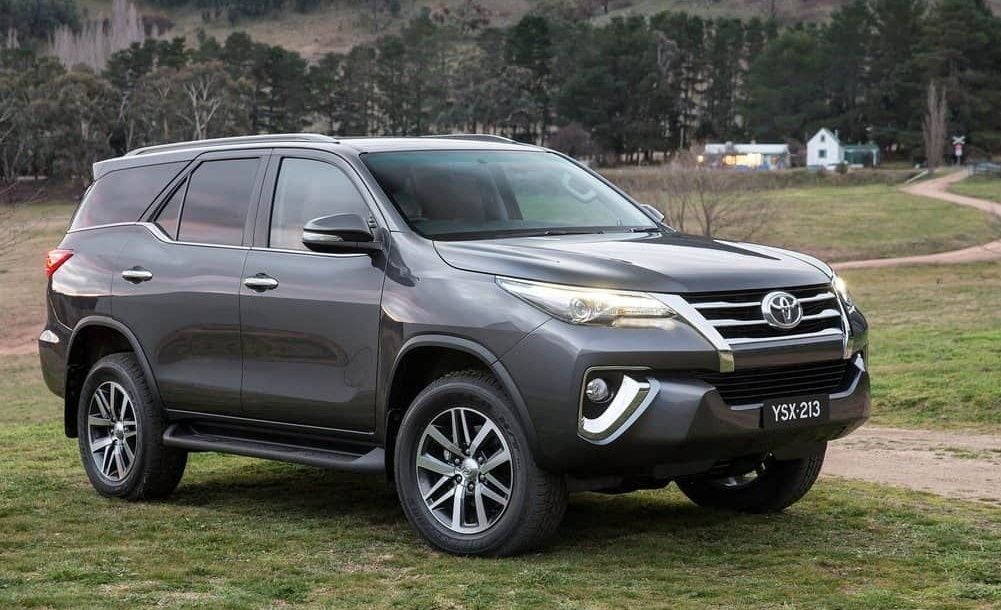





.jpg&w=828&q=75)

.webp&w=828&q=75)



.jpg&w=828&q=75)

.jpg&w=828&q=75)

.jpg&w=828&q=75)



.webp&w=640&q=75)




.webp&w=640&q=75)


